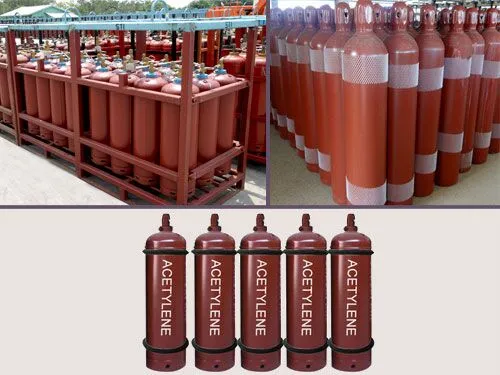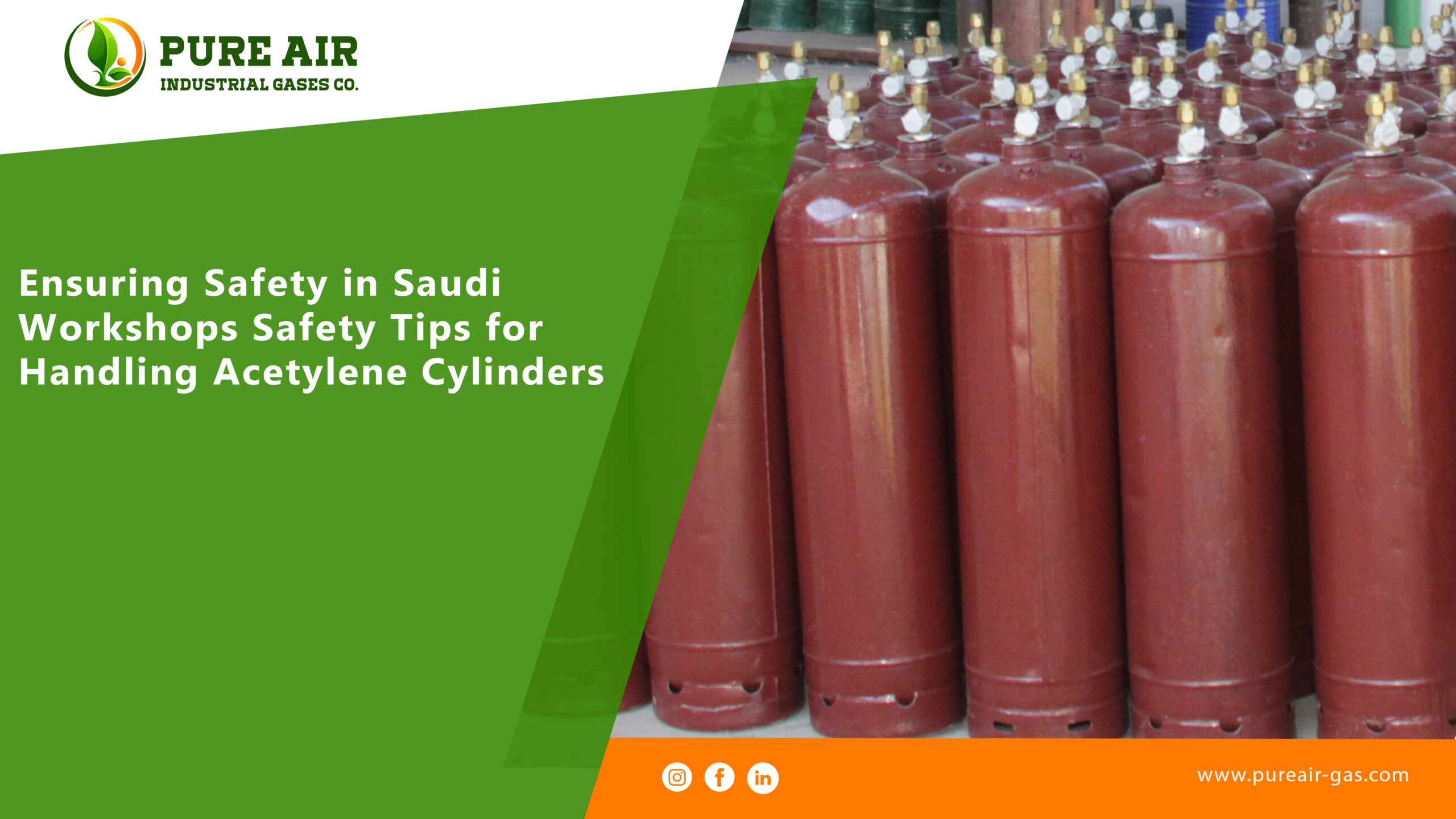In the dynamic landscape of Saudi workshops, safety takes precedence, especially when it comes to handling hazardous materials like acetylene cylinders Here is a comprehensive guide to ensure the safe storage, transportation, and handling of acetylene cylinders in Saudi workshops. Users should review this procedure and implement safety measures to prevent accidents, protect workers, and maintain a secure working environment.
acetylene cylinders
Accidents usually occur due to the following factors:

- Defective Storage & Handling Practices.
- Insufficient Examination Procedures.
- Flawed Equipment and/or Design (such as poorly fitted valves and regulators).
- Accidental Gas Releases.
- Undetected Damage to Cylinders.
- Insufficient Training and Supervision in Cylinder Handling.
The precautions to prevent injuries and accidents during storage Acetylene Cylinders
- Storage and Handling Best Practices
- Cylinders Storage is a significant area of concern, as many potential hazards may emerge from improper handling combined with insecure storage.
- The key point to remember about gas cylinders is that they are inherently unstable and can transform into substantial projectiles when high-pressure gas is released.
- It is crucial to note that proper storage is the first line of defense when dealing with acetylene cylinders. To prevent falling, storage cylinders should be upright and securely restrained, and the valve protection caps must be firmly in place and tightened.
- Regular inspections for leaks and damage are essential to identify potential issues early on. Additionally, storage places should be in the area where cylinders will be away from being knocked over or damaged by passing or falling objects.
- Condition of Storing acetylene cylinders:
The designated storage area for cylinders should be away from potential sources of:
- Excessive Heat
- Open Flames or Ignition
- Corrosive Chemicals
- Chemical Vapors
- Direct Sunlight
- Dampness or Salt
Ensuring Secure Transit: Safe Transportation Protocols for Transporting Acetylene Cylinders
Never compromise on safety measures when handling compressed gas cylinders, as improper usage can lead to explosions, endangering lives, causing harm to workers, damaging equipment, and property destruction. Transporting acetylene cylinders requires accurate planning. Adhering to safe handling guidelines is imperative:

- Use vehicles equipped with secure restraints, ensuring cylinders remain in an upright position during transit.
- Sufficient ventilation in transportation vehicles is crucial to diffuse any potential gas leakage.
- Only drivers well-versed in the hazards and capable of demonstrating safety precautions should handle compressed gas cylinders to minimize risks.
- When lifting cylinders with a hoist or crane, employ suitable cradles, slings, clamps, or other effective means.
- Utilize eye protection and appropriate footwear consistently, even when transporting cylinders over short distances.
- Exercise caution when using lift trucks to raise or lower gas cylinders.
- Ensuring adequate precautions are taken to prevent potential falls.
- Cylinders should not be allowed to stand or lie in water to prevent any adverse effects.
Essential Personal Protective Equipment (PPE) for Acetylene Cylinder Handling:
Workers handling acetylene cylinder handling must adhere to strict PPE requirements to minimize risks. This encompasses the use of safety glasses, flame-resistant clothing, and specialized gloves. Choosing non-synthetic and non-flammable attire adds an extra layer of personal protection. Further, regular training sessions are imperative to ensure workers are well-versed in the proper usage and maintenance of their PPE, fostering a secure working environment.
Crucial Ventilation Measures for Acetylene Handling
Ensuring well-ventilated workspaces is of utmost importance while dealing with acetylene. Implementing proper ventilation systems or fans is essential to swiftly disperse any escaping gas, particularly within enclosed spaces. This not only ensures the safety of workers but also mitigates the risk of acetylene accumulation, thereby reducing the risk of fires or explosions. Regular maintenance and testing of ventilation systems are indispensable, ensuring their optimal functionality in emergency situations.

Enforcing a No Smoking Policy in Acetylene Cylinder Zones
To further mitigate the risk of fire, it is imperative for workshops to strictly enforce a no-smoking policy in areas where acetylene cylinders are present. Prominently displayed no-smoking signs act as a continual reminder, contributing to a safer environment for everyone on the premises. Furthermore, workshops should establish a designated smoking area situated away from storage and handling zones, effectively minimizing the potential for accidental ignition sources, and reinforcing a commitment to workplace safety.
Building a Foundation of Safety in Saudi Workshops
To conclude, by adhering to these safety measures, workshops in Saudi Arabia can create a secure environment for handling acetylene cylinders. The emphasis on prioritizing storage, transportation, personal protective equipment, ventilation, and enforcing a stringent no-smoking policy goes beyond safeguarding workers—it actively contributes to the holistic well-being of the entire workshop. Through consistent training initiatives and adherence to safety standards, workshops can minimize risks and ensure a safer working environment for all.



